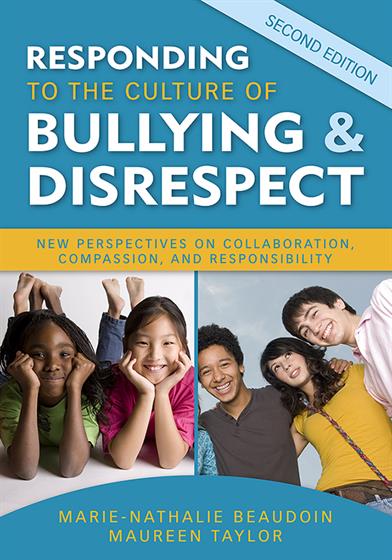Foreword by Honey Berg
Acknowledgments
About the Authors
Introduction
Part I. Laying Foundations
1. How Problems Develop: A Frog Story and a Shift in Perspective
Lessons From This Story
Useful Options Are Also Eliminated
Does Everyone Have the Same Contextual Blocks?
2. Are Problems of Disrespect Inadvertently Supported?
Competition
Comparison
Rules
Achievement at All Cost
Evaluation
3. Unraveling Assumptions: Educators' Roles and Students' Behaviors
The Effects of Myths and Assumptions
Common School Questions: New Ways of Thinking
4. Responding Effectively to Problems
A Fresh Attitude
Chipping Away at the Problem With a Powerful Tool: Externalization
Dealing Narratively With Disrespect and Bullying
A Narrative Response
Additional Options
Summary of the Practice of Externalizing
Common Questions About the Externalization Process
5. Being Respectful and Open to Students' Experiences
Defining Experience
Experience of School
Overlapping Experiences of the Problem
Addressing These Experiences
6. Making Changes Last for More Than a Week
The Dandelion Problem
Thinking Outside the Box
Multiple Selves: Who Is the Real Person?
Stories
Creating Stories Through Language
Mentally Filling the Blanks
Perspectives Create Stories
An Educator's Question: If Truths Don't Exist, How Do We Know Which Story to Trust?
Audience: You Are Who You Are Perceived to Be
The Thread of New Stories: Recapitulation
Reauthoring Alex's Journey
Common Teacher Questions: New Ways of Thinking
Part II. Applications and Examples: Success Stories of Overcoming Bullying and Disrespect
7. Listening to Students' Voices
Disrespect/Bullying Survey
Interviews: Walking in Students' Shoes
8. Cultivating Respect, Appreciation, and Tolerance in the School
Connection
Appreciation
Collaboration
Self-Reflection
Community and Diversity
Respect and Shedding Adultism
Teacher Question About Shedding Adultism
9. Dealing With Disrespect and Bullying in the Classroom: The Bugging Bug Project
A Review of the Narrative Ideas That Guide This Project
Section 1: Externalizing the Problem
Section 2: Building on Successes
Section 3: Celebration of Knowledge and Expertise
Brief Summary of Classroom Facilitation Considerations
Conclusion
10. Working With Individual Students Around Bullying: Helping a Child Suffering From a "Bullying Spell"
A Problem-Dominated Identity
Rewriting the Story in a Vacuum
Rewriting the Story in the Community
A Past to the Preferred Story at School
A Past to the Preferred Stories at Home
Extending the Audience to the Preferred Story
Conclusion
11. Brain and Behaviors: How Young People Change and How Educators Can Help
The Visible Story
The Invisible Story
The Contextual Story
The Historical Story
Dead-End or Future Possibilities?
The Possible Future
Conclusion
Part III. Prevention: Scaffolding a Complex and Sound Culture of Respect
12. Creating a Partnership With Response-able Youth
Bubble Trouble
Lessons From This Story: The Beliefs
The People
The Relationship
Teacher Questions
13. Spotlight on Stories of Successful Prevention
Story 1: "You're Ugly"
Story 2: The Clipboard
Story 3: Sign Language
Story 4: The Violent Drawing
Story 5: Girls' Meanness
Story 6: The Brand New Atlas
Spotlight on a School With a Successful Prevention Model
Conclusion
Resource A: Glossary
Resource B: Summary Table of Strategies
Resource C: Discourses
Resource D: "Yes and" Exercise
Resource E: Educators' Problem-Solving Questions
References
Index




